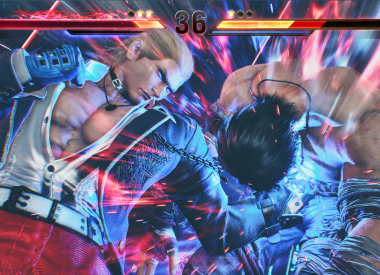UFC 3 is a big leap forward for the franchise. The striking system has been redesigned. The submission system reworked.. And movement feels much more fluid as well, largely dueto a revolutionary new motion capture technology the EA Canada team used to bring lifelike animations to the octagon.
Player.One talked to Creative Director Brian Hayes about the new technology, and how it’s allowed the team to make the most realistic UFC game yet.
“We basically used to do motion capture and cut up little bite-sized chunks that we would stitch together algorithmically,” Hayes told Player.One about how UFC and UFC 2 were made. “We’d have an animation step forward, an animation moving at 45 degrees to the right and left, and if you moved in between that, we kind of blended the animations and it kind of looked like a person moving in that direction.”
New techniques allow UFC 3 to look much more realistic. “What we do in mo-cap now, we take motion capture with an athlete moving in all different directions and speeds and responding to different stimulus and changing directions abruptly,” said Hayes. “All of that motion capture data goes into a structuralist motion field that this technology can sample in real time to put far more responsive and far more authentic motion inside the game.”
The new animations compliment the rebuilt striking system and allow the virtual UFC fighters to move just like their real-life counterparts. “Combinations are much more fluid than they’ve been in the past,” Hayes said. “We captured the combinations as one piece of data. If you input them into the game correctly, you’ll see very fluid motions.”
The new motion capture system is easier for everyone involved, including the athletes. Hayes said the old system for mo-cap would require an athlete to spend up to two full days recording. “The way those motion capture suits were done in the past, they were very repetitive and laborious,” he said. “The way we do things now, it’s much more efficient and we can actually have an athlete come in for a half day in the morning and we can have everything we could ever need. The way we shoot the data is just fundamentally different.”
If you want a look into the motion capture studio used by EA Canada, the company posted a number of pictures from 2015 during a recording session for NBA Live. It’s likely the studio has become even more high tech over the past few years.
The streamlined capture process means faster production times and, as a result,, more UFC fighters were called in to record. Hayes says this allows UFC 3 to feel even more realistic, with everything from signature moves to slight mannerisms included in the game. “We’ve never had the opportunity to have that many active UFC fighters come do mo-cap for us, and it’s all an ancillary benefit of this new [motion capture] tech,” he said.
UFC 3 releases for Xbox One and PS4 on Feb. 2.
So what do you think? Are you excited to see how realistic the movement in UFC 3 is for yourself? What else would you like to know about the upcoming MMA game? Let us know your thoughts in the comments section below.
- Amazing graphics and gameplay
- Presentation feels just like the real thing
- Framerate issues after long play sessions
- Career mode doesn't go far enough



















